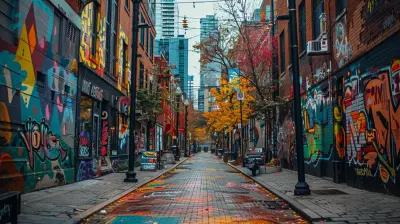Experiencing the Sacred Rituals of Indian Festivals
21 October 2025
India is a land where time seems to dance to the rhythm of festivals. From North to South, East to West, every corner of the country lights up with colors, sounds, smells, and sacred vibes whenever a festival arrives. But what makes Indian festivals more than just grand celebrations? It’s the deep-rooted rituals—the sacred, emotional, and often symbolic acts—that truly shape the soul of these events. So let’s take a deep dive into what it actually feels like to experience the sacred rituals of Indian festivals firsthand.
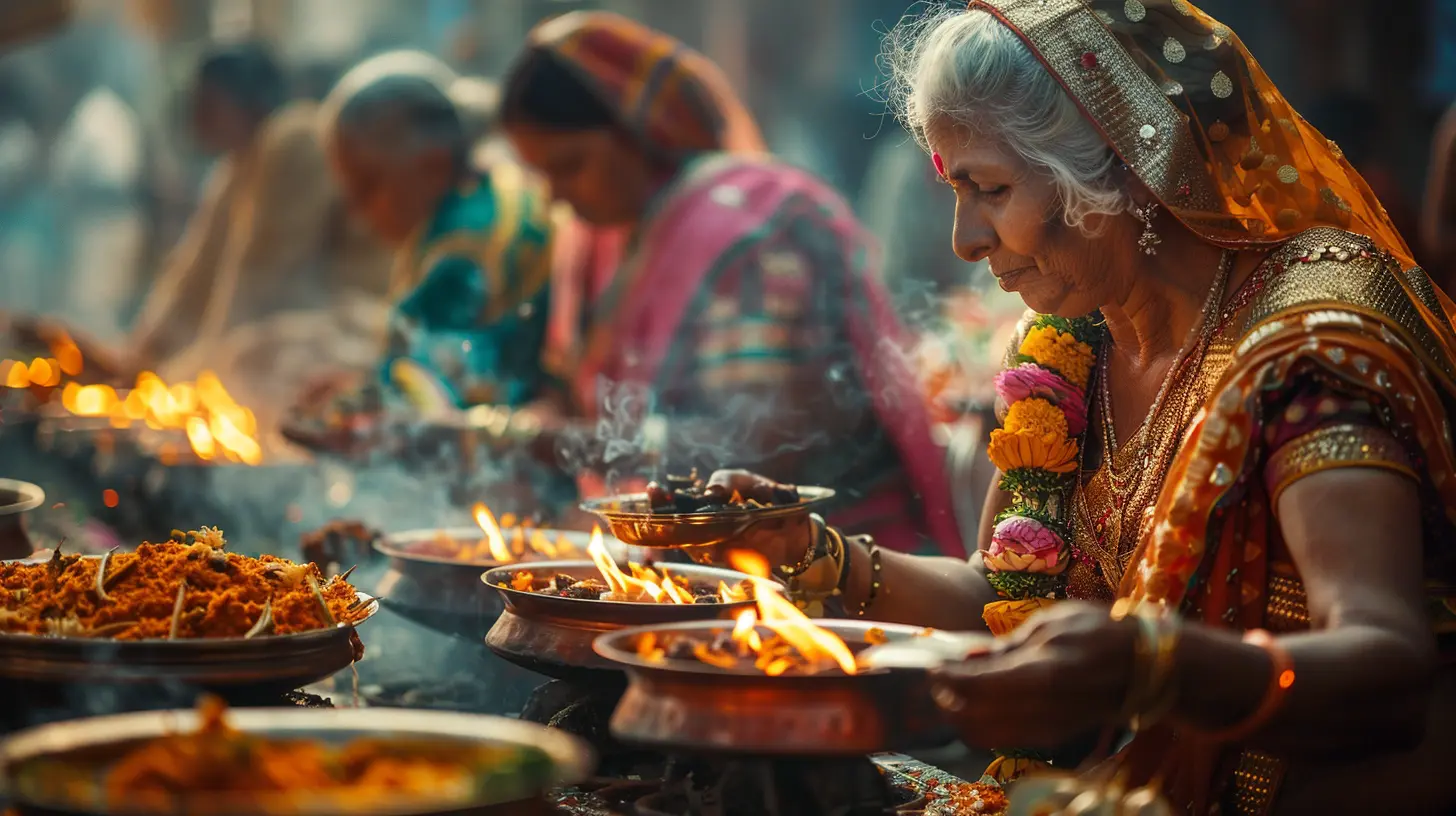
A Country Where Every Day Could Be a Festival
Have you ever looked at an Indian calendar and thought, “Whoa, do they ever take a break from celebrating?” You’re not wrong. With over 1.4 billion people from all kinds of religious and cultural backgrounds, there’s something or the other being honored almost every day. But don't get it twisted—these aren’t just parties. These festivals are powerful spiritual experiences, passed down through generations, soaked in meaning and reverence.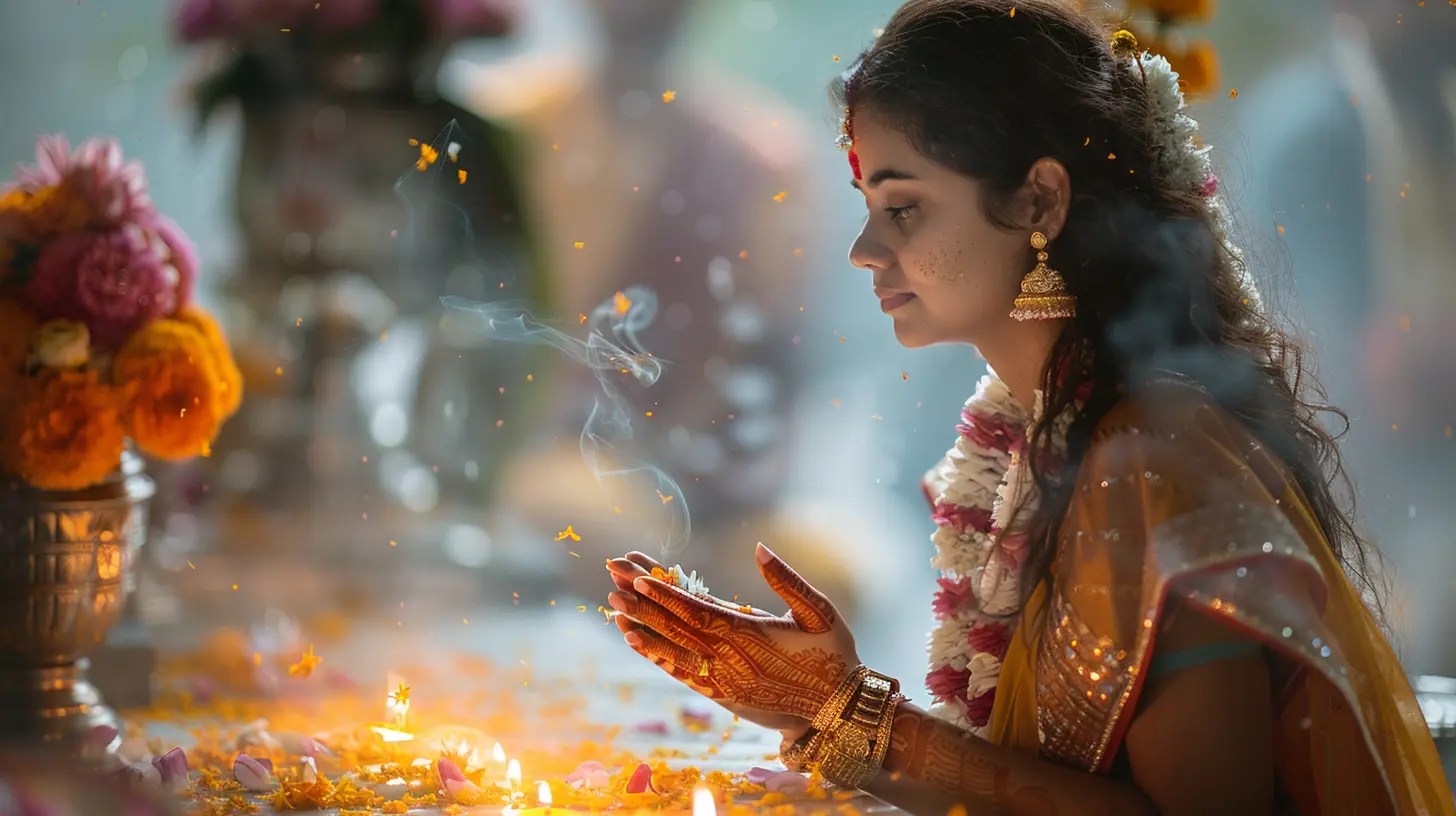
The Heartbeat of Every Festival: Sacred Rituals
Okay, so what exactly are these sacred rituals?Think of them as the spiritual spine of a festival. They're not just actions; they are symbols, prayers, and offerings rolled into one beautiful, soulful performance. From lighting a diya (oil lamp) to offering sweets to deities, each ritual tells a story, makes a connection, or seeks a blessing. They're meditative, emotional, sometimes even theatrical.
Curious? Let’s walk through a few key Indian festivals and unravel the sacred rituals that make them unforgettable.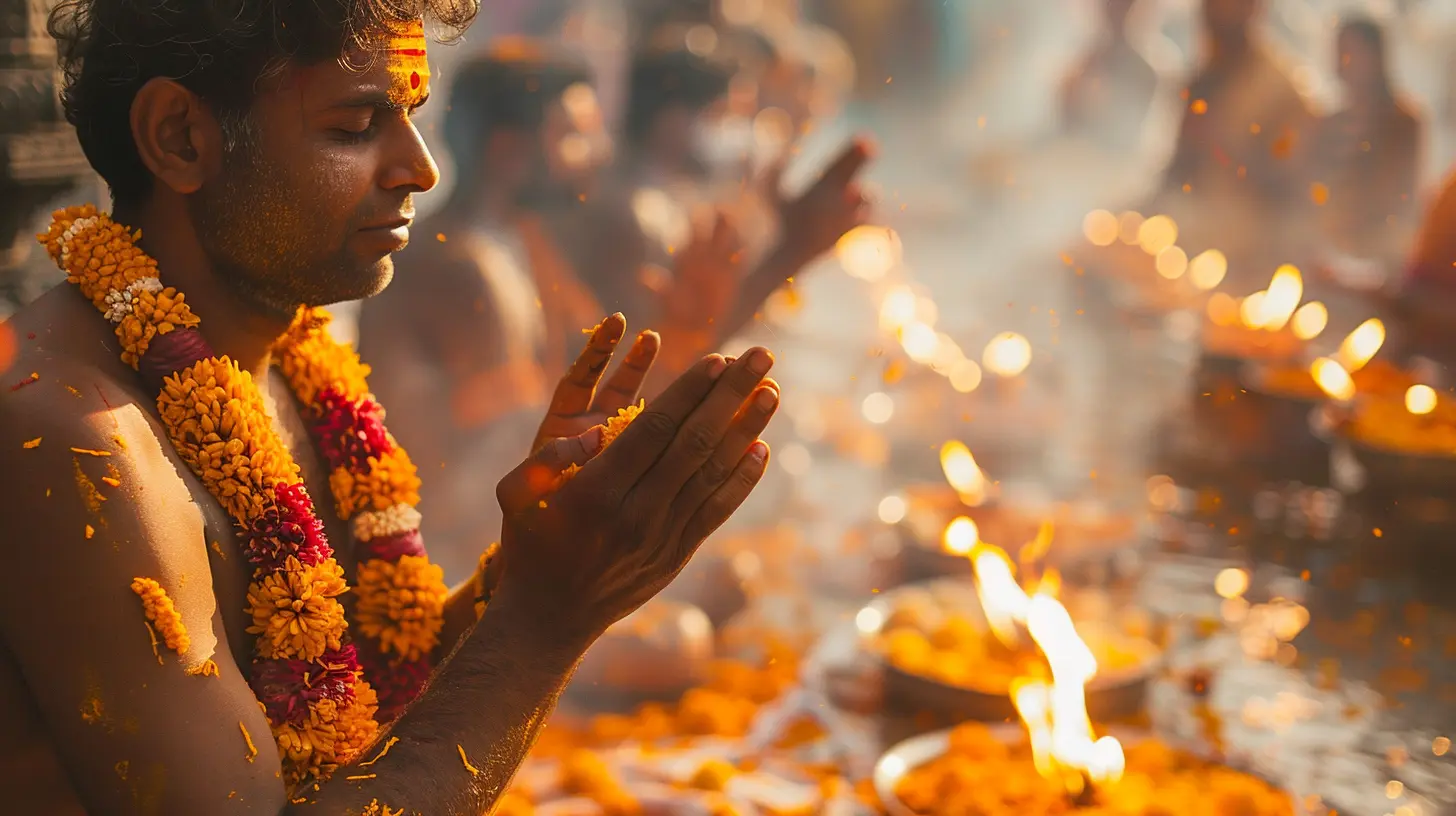
1. Diwali – The Festival of Lights (And So Much More)
You’ve probably heard about Diwali—the pretty lights, the firecrackers, the sweets. But let’s peel back the layers.The Rituals
- Lakshmi Puja: Entire families gather around altars covered in marigolds and candles to pray to Goddess Lakshmi, the goddess of wealth and prosperity. The prayer (puja) isn’t just a chant—it often includes storytelling, music, and sacred movements.- Lighting Diyas: Beyond aesthetics, lighting these oil lamps signifies triumph over darkness. It’s symbolic, meditative, and deeply spiritual.
- Rangoli Making: Those beautiful patterns at doorsteps? They’re not just art. They’re invitations to positive energy and divine blessings.
Every hand that lights a diya or sprinkles colored powder is taking part in something ancient, something magical.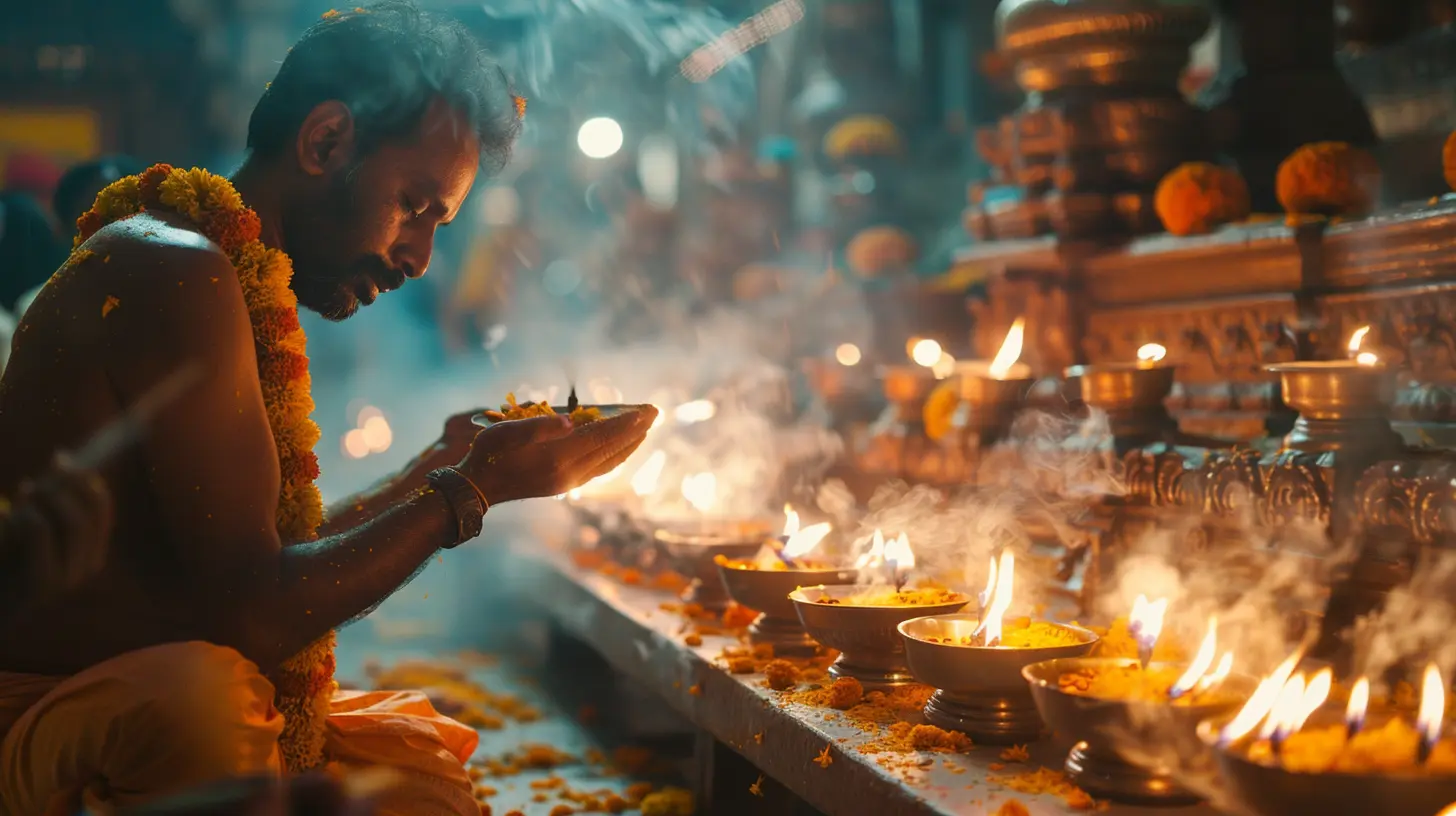
2. Holi – A Colorful War of Love and Letting Go
Often called the “Festival of Colors,” Holi is wild, chaotic, and full of joy. But behind that color splash is a set of soulful rituals.The Rituals
- Holika Dahan: A day before Holi, people gather wood and burn a symbolic pyre. It represents burning away negative energy and ego, a fresh start.- Throwing Colors: Color-play isn’t just for fun. In ancient texts, colors had therapeutic and spiritual meaning—the reds, blues, and yellows are literal expressions of joy and divine energy.
- Forgiveness Rituals: Many use this time to mend old wounds. There’s actually a beautiful saying—“Bura na mano, Holi hai!” which means “Don’t take offense, it’s Holi!”
So yes, Holi is messy. But it’s a sacred kind of messy.
3. Navratri – Nine Nights of Divine Feminine Power
This one’s special. Navratri is nine straight nights of feminine divinity, and the rituals are both fierce and tender.The Rituals
- Daily Durga Puja: Each of the nine days honors a different form of the goddess Durga—from warrior to nurturer. Offerings are made with great care—flowers, sweets, incense—and each has symbolic meaning.- Fasting: Devotees often fast to cleanse their minds and bodies. This isn’t about suffering—it’s about reconnecting.
- Garba and Dandiya Dance: Even the dance forms have spiritual roots. The circular movement represents the cycle of life and the universe itself.
Navratri rituals make you feel both empowered and protected—like you’re dancing alongside goddesses.
4. Eid al-Fitr – The Festival of Breaking the Fast
Though often associated with feasting, Eid is deeply spiritual. It follows an entire month of fasting (Ramadan), introspection, and prayer.The Rituals
- Ghusl (Purification): The day begins with a full-body cleansing ritual. It’s symbolic of a fresh, pure beginning.- Eid Prayer (Salat al-Eid): Thousands gather in mosques or open fields. The collective rhythm of bowed heads and whispered prayers is profoundly moving.
- Zakat al-Fitr: Before celebrating, every Muslim is expected to make a donation to the needy. It isn’t charity—it’s duty, compassion, and justice rolled into one.
Eid rituals teach one to give, forgive, and be grateful—a spiritual metabolism reset.
5. Pongal – A Harvest Festival With Earthy Sacredness
Celebrated mostly in Tamil Nadu, Pongal is a hymn to the Earth itself.The Rituals
- Boiling Milk Over: The act of letting milk boil over a clay pot while chanting “Pongalo Pongal!” is a powerful fertility and prosperity ritual.- Offering to the Sun God: Freshly harvested rice, jaggery, and lentils are offered to Surya, the Sun God. It's an elegant thank-you note to nature.
- Kolam Designs: These geometric patterns aren't just pretty shapes—they invite balance, peace, and positive energy into the home.
Everything in Pongal feels grounded—like pressing your palms to the soil and whispering gratitude.
6. Ganesh Chaturthi – Welcoming the Elephant God
Ever seen a street parade where they carry huge elephant idols and thought, “What’s going on here?” You’re looking at Ganesh Chaturthi in action.The Rituals
- Idol Installation: Families and communities bring home clay idols of Lord Ganesha. But before that, there’s a sacred ceremony called “Pranapratishtha,” where life is spiritually infused into the idol.- Daily Aarti: Songs, claps, drums, and light—this isn’t just entertainment. It’s a collective burst of devotion.
- Visarjan (Immersion): On the last day, the idol is immersed in a body of water, symbolizing the cycle of life and letting go.
It’s emotional, no kidding. People cry during the immersion. It’s like saying goodbye to a beloved family member.
7. Janmashtami – Celebrating the Birth of Krishna
This festival wraps you in stories, music, and absolute joy. It celebrates the birth of Lord Krishna—India’s most playful and philosophical deity.The Rituals
- Midnight Puja: Krishna was born at midnight, so temples and homes stay awake to chant, pray, and celebrate.- Jhulan (Swinging the Idol): A baby idol of Krishna is placed in a cradle and gently swung—it’s tender, intimate, and deeply spiritual.
- Dahi Handi: Teams form human pyramids to break a pot hanging high up—a reenactment of Krishna's childhood pranks. Fun, sure. But also a ritual of unity and strength.
This is one festival where laughter is part of the prayer.
Why Rituals Matter
You might ask, “Why all the pomp and detail?” Because rituals are memory-makers. They’re the bridge between the material and the spiritual. They force you to pause, feel, remember, and connect. Whether you believe in the divine or just the power of human culture, rituals offer a sense of belonging and emotional elevation like nothing else.Tips for Travelers Wanting an Authentic Experience
So you’re thinking of experiencing these festivals firsthand? Here’s how to do it respectfully and meaningfully:1. Join a Local Family
Nothing beats celebrating with locals. You’ll not only be welcomed warmly, but you’ll also understand the what and why behind each ritual.2. Dress Modestly and Appropriately
It’s a form of respect. Plus, traditional clothes add to the experience! Ever worn a saree or a kurta? Now’s your chance.3. Ask Before You Click
Yes, it’s photogenic—but always ask permission before snapping pictures, especially during private rituals.4. Participate Mindfully
Don’t just observe. Whether it's offering flowers or joining a dance, get involved. Your respect and sincerity will be felt.Final Thoughts
Experiencing the sacred rituals of Indian festivals is like reading a living, breathing storybook. Each page comes alive with color, emotion, and deeper meaning. These rituals aren’t just acts—they're expressions of faith, culture, and the beautiful chaos of being human.So next time you think of visiting India, don’t just plan for the Taj Mahal or Goa’s beaches. Time your visit with a local festival. Let the sacred rituals sweep you off your feet. You won’t just visit India—you’ll feel her heartbeat.
all images in this post were generated using AI tools
Category:
Cultural ToursAuthor:

Shane Monroe
Discussion
rate this article
1 comments
Zephyrine Frye
Embrace the vibrant tapestry of Indian festivals—an unforgettable journey into sacred traditions awaits!
October 21, 2025 at 5:06 PM

Shane Monroe
Thank you! India's festivals truly offer a unique blend of spirituality and celebration that enrich our cultural journey.

